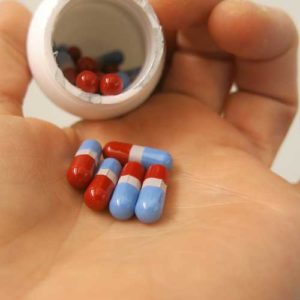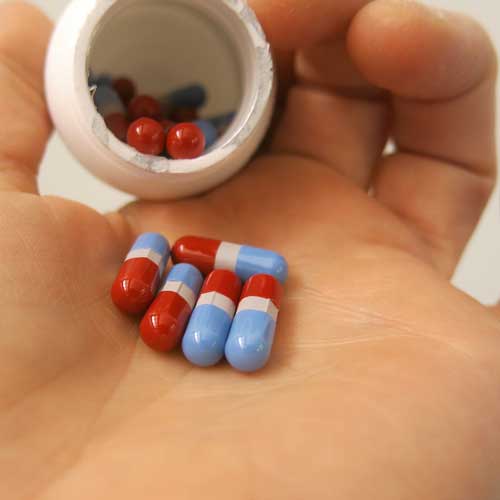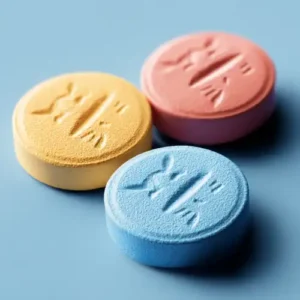Barbiturates are primarily hypnotic drugs, they are like tranquillisers in that they work by depressing the nervous system. They are prescribed to calm people down but in larger amounts can help them to sleep. Due to the number of fatal accidents from their misuse they are now largely replaced by tranquillisers.

Barbiturates used to be a regular feature on the drugs scene but nowadays are quite rare as very few are prescribed and they are not made illicitly.
The street name for drugs such as barbiturates include barbs, barbies, red devils and sleepers.
What Do Barbiturates Look Like?
Barbiturates are usually sold as capsules with powder inside them.
How Are Barbiturates Taken?
Barbiturates are usually swallowed but sometimes barbiturates are injected and this can be extremely dangerous.
What Are the Immediate Effects of Taking Barbiturates?
In small quantities barbiturates provide relief from insomnia, anxiety and tension, they might make the user appear drunk. There is a high risk of overdose because the lethal dose is quite close to the ‘normal’ dose and so you can overdose without knowing it.
What Are the Long-term Effects of Taking Barbiturates?
Barbiturates are highly addictive and there is a serious risk of overdose. They can also be fatal when mixed with alcohol, tranquillisers or heroin. Heavy users are also at risk of pneumonia and bronchitis.
Long term use of barbiturates can lead to depression, intense tiredness and extreme mood swings.
Drugs include:
|
Drug name |
Brand name |
Street name |
Therapeutic dose range |
| Amylobarbitone | Amytal and Amytal Sodium | 60-200mg | |
| Butobarbitone | Soneryl | 100-200mg | |
| Methyl phenobarbitone |
Prominal | 100-600mg | |
| Pentobarbitone | Nembutal | Nembies | 100-200mg |
| Phenobarbitone | Luminal | 60-180mg | |
| Quinalbarbitone | Seconal Sodium | Seggies | 50-100mg |
| Quinalbarbitone and amylobarbitone |
Tuinal | Chewies | 100-200mg |
Street use
Barbiturates can be swallowed but more often among heavy users they are dissolved in water and injected.
Drug effect
Barbiturates are depressants or downers. They work on the whole nervous system producing a generalised sedation. Respiration and heart rate are reduced and there is a general lowering of anxiety levels. There is also some disruption of thought processes and memory. Higher doses lead to loss of physical coordination and there is “drunken” and sometimes aggressive behaviour.
Dependency
Tolerance and dependence develop very rapidly as the level of drug use increases. Withdrawal symptoms appear within 24 hours of the last dose, peak about the second day and then fade over the next week to 10 days. Symptoms include restlessness, anxiety, increased heart rate, tremor and insomnia. Among heavy users, there may be delirium and seizure, especially following sudden withdrawal, and so doses should be reduced gradually over time.
Long-term use
Long-term use of barbiturates can lead to chronic inebriation, aggressive behaviour, impaired memory, judgement and coordination, and insomnia.
Overdose risk
Although tolerance to barbiturates develops rapidly, the gap between a safe (for a heavy user) and lethal dose is very narrow and so accidental overdoses are very common with these drugs. Large doses can lead to respiratory failure, coma and eventual death. Heavy users are also at risk from hypothermia because while sedated, there is poor heat retention. Deaths due to hypothermia are not uncommon.
Risks in pregnancy
Large doses of some barbiturates during pregnancy have been associated with congenital malformations. However, it is important that the drugs are not stopped immediately because of the risk of seizure. The withdrawal period need not be extended because of the pregnancy and detoxification over eight days is common.
Legal status
Barbiturates are a prescription-only medicine and a class B controlled drug (Schedules 2 and 3). This means it is illegal to possess the drug without a prescription or to supply it to others. If prepared for injection, barbiturates become class A drugs. All barbiturates carry the same penalties, as listed below.
Maximum penalty (if prepared for injection)
For possession:
For dealing: Seven years and/or unlimited fine
Life and/or unlimited fine
Maximum penalty (if in capsule form)
For possession:
For dealing: Five years and/or unlimited fine
14 years and/or unlimited fine
Quinalbarbitone (Seconal)
Street name
Seggies, seckies Brand name Seconal (Lilly)
Drug effect
Depressant (“downer”)
Description
Orange capsules (50mg and 100mg, marked F42 and F40 respectively) both marked Lilly.
Therapeutic use
Insomnia
Method of use
Injected or swallowed
Dependency
Yes
Withdrawal
Effects of Seconal last for three to six hours. Withdrawal begins within 24 hours of last dose, peaks after two days and fades after eight days. Symptoms include irritability, insomnia, fainting, nausea and delirium. Sudden withdrawal can result in seizures which can be fatal. Sleeplessness may continue for five to six weeks.
Long-term use Pneumonia and bronchitis; impaired memory, judgement and coordination; insomnia; problems associated with withdrawal.
If injected:
Infection risk
circulatory damage
abscesses and ulceration caused by irritant nature of drug.
Overdose risk
Overdose deaths are common among heavy users. Heavy users may overdose with as little as 10 times the normal therapeutic dose. There is also a risk of death due to hypothermia. Overdose risks increase if barbiturates are mixed with other drugs such as cocaine, opiates or alcohol.
Legal status Seconal is a prescription-only medicine and a class B controlled drug (Schedule 2). If prepared for injection, it becomes a class A drug. It is illegal both to possess Seconal without a prescription or to supply it to others.
Special note: Seconal is a dangerous drug because of overdose risk, seizures following sudden withdrawal and hypothermia risk.
Quinalbarbitone and amylobarbitone (Tuinal)
Street name
Chewies
Brand name
Tuinal (Flynn)
Drug effect
Depressant (“downer”)
Description
Orange/blue capsule (100mg) marked Lilly F65.
Therapeutic use
Insomnia
Method of use
Injected or swallowed
Dependency
Yes
Withdrawal
Effects of Tuinal last for three to six hours. Withdrawal begins within 24 hours, peaks after two days and fades after eight days. Symptoms include irritability, insomnia, fainting, nausea and delirium. Sudden withdrawal can result in seizures which can be fatal. Sleeplessness can continue for five to six weeks.
Long-term use
Pneumonia and bronchitis; impaired memory, judgement and coordination; insomnia; problems associated with withdrawal.
If injected:
infection risk
circulatory damage
abscesses and ulceration caused by irritant nature of drug.
Overdose risk
Overdose deaths are common among heavy users. Heavy users may overdose with as little as 10 times the therapeutic dose. There is also a risk of death due to hypothermia. Overdose risk increases if barbiturates are mixed with other drugs such as cocaine, opiates or alcohol.
Legal status
Tuinal is a prescription-only medicine and a class B controlled drug (Schedule 2). If prepared for injection, Tuinal becomes a class A drug. It is illegal to possess Tuinal without a prescription or to supply it to others.
Special note: Tuinal is a dangerous drug because of overdose risk, seizures following sudden withdrawal and hypothermia risk.
Photo Credit: “RED WHITE & BLUE — america the drug-add” (CC BY-ND 2.0) by torbakhopper
Zoom Testing is a leading UK drug testing company and a supplier of Drug Test Kits.
This post was originally published in January 2015 and has been updated since.





